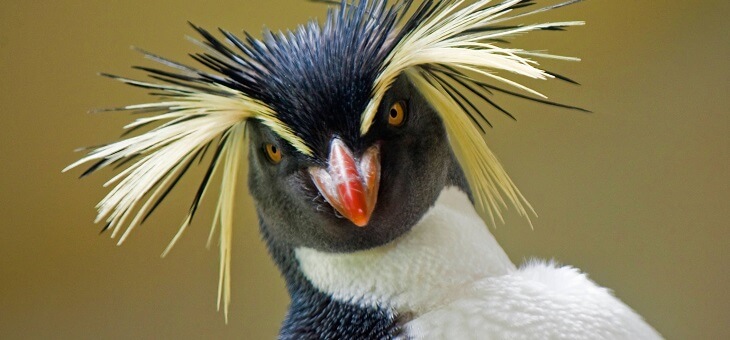Imagine a penguin, and you probably picture a pure white snowscape in a David Attenborough program, the birds huddled together to withstand the polar chill.
In reality, there are 18 species of penguin, and only two are truly native to Antarctica. The rest are spread through the climates and continents of the southern hemisphere, even reaching up into the tropics.
Here are a few of the more unexpected places our flightless friends can turn up.
The Galapagos Islands
Giant tortoises, marine iguanas and penguins. It speaks volumes for the Galapagos Islands’ biodiversity that tropical penguins aren’t what the archipelago is famous for. Endemic to the Galapagos Islands, Galapagos penguins are among the world’s smallest, standing at around just 50 centimetres high.
The Galapagos Islands straddle the equator, and there are penguin colonies on Isabela Island that just about live in the northern hemisphere – the only penguins in the world to do so.
Read: The world’s best wildlife trips
Namibia
The sparsely populated African nation of Namibia is famed for its coastal desert – in which towering dunes lead directly into the ocean – but 24 colonies of African penguin breed down the country’s Atlantic coast, while vagrants have been spotted as far north as the Congo.
The only species of penguin to breed on the African continent, these small birds also frequent South Africa’s shores, where they are hunted by leopards, mongoose and feral cats. For tourists, the African penguin headquarters is Boulders Beach – a stretch of sand near Cape Town that would look at home in the Caribbean, were it not for its carpet of squawking penguins.
The Ballestas Islands
You don’t have to travel all the way to the Galapagos to find South American penguins, and the continent hosts colonies of Humboldt penguins as far north as Peru.
In the land of llamas and Machu Picchu, Peru’s penguins are confined to the Ballestas Islands just off the Paracas Peninsula, and rub shoulders with pelicans, cormorants, dolphins and sea lions.
Read: Enjoy these islands while you can
The Falkland Islands
If you know one thing about the wildlife of the Falkland Islands, it’s probably that the archipelago contains an absurd number of sheep. At roughly 153 sheep per person, the islands comfortably put Wales and New Zealand to shame, and a sheep even features on their flag and crest.
But the British overseas territory should be just as proud of its five penguin species: Rockhopper, King, Magellanic, Macaroni, and Gentoo. The last of these is more numerous on the Falklands than anywhere else on earth, making the archipelago a global penguin capital.
Read: Nature’s most dazzling displays
Patagonia
Known mostly for sweeping grasslands, jagged mountain ridges, and rapidly vanishing glaciers, Patagonia’s coasts are often overlooked.
In fact, this region at the southernmost tip of South America, shared by Argentina and Chile, boasts record-breaking numbers of penguins, with Punta Tombo hosting the largest Magellanic penguin colony in the world – 210,000 breeding pairs strong.
The Chilean island of Chiloe is the only place on earth where Humboldt and Magellanic penguins breed together cheek-by-wing, while Magellanic, Gentoo, King, and Rockhopper penguins call the Tierra del Fuego region their home.
Have you seen penguins in the wild? Why not share your most memorable wildlife experience in the comments section below?
– With PA
If you enjoy our content, don’t keep it to yourself. Share our free eNews with your friends and encourage them to sign up.

